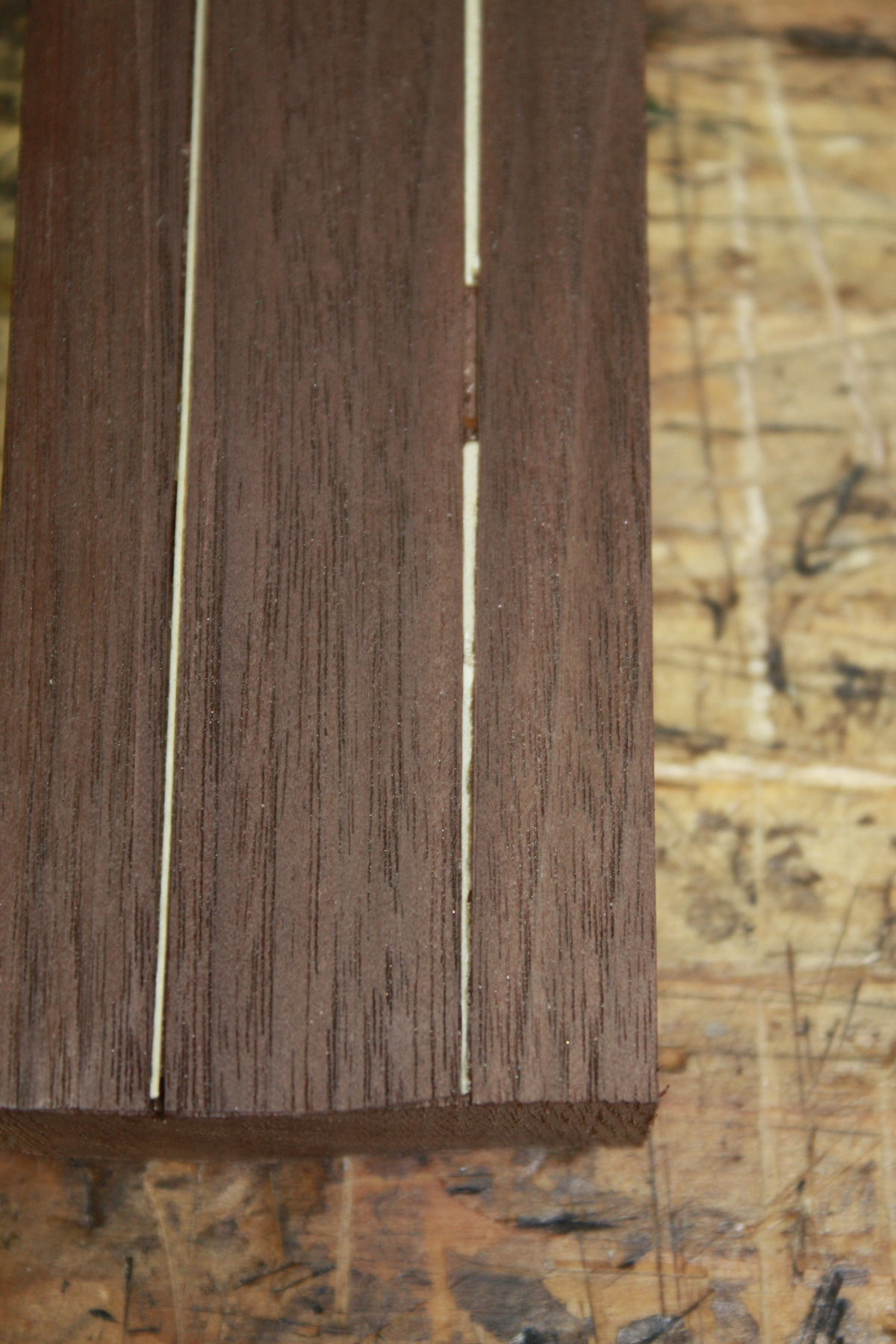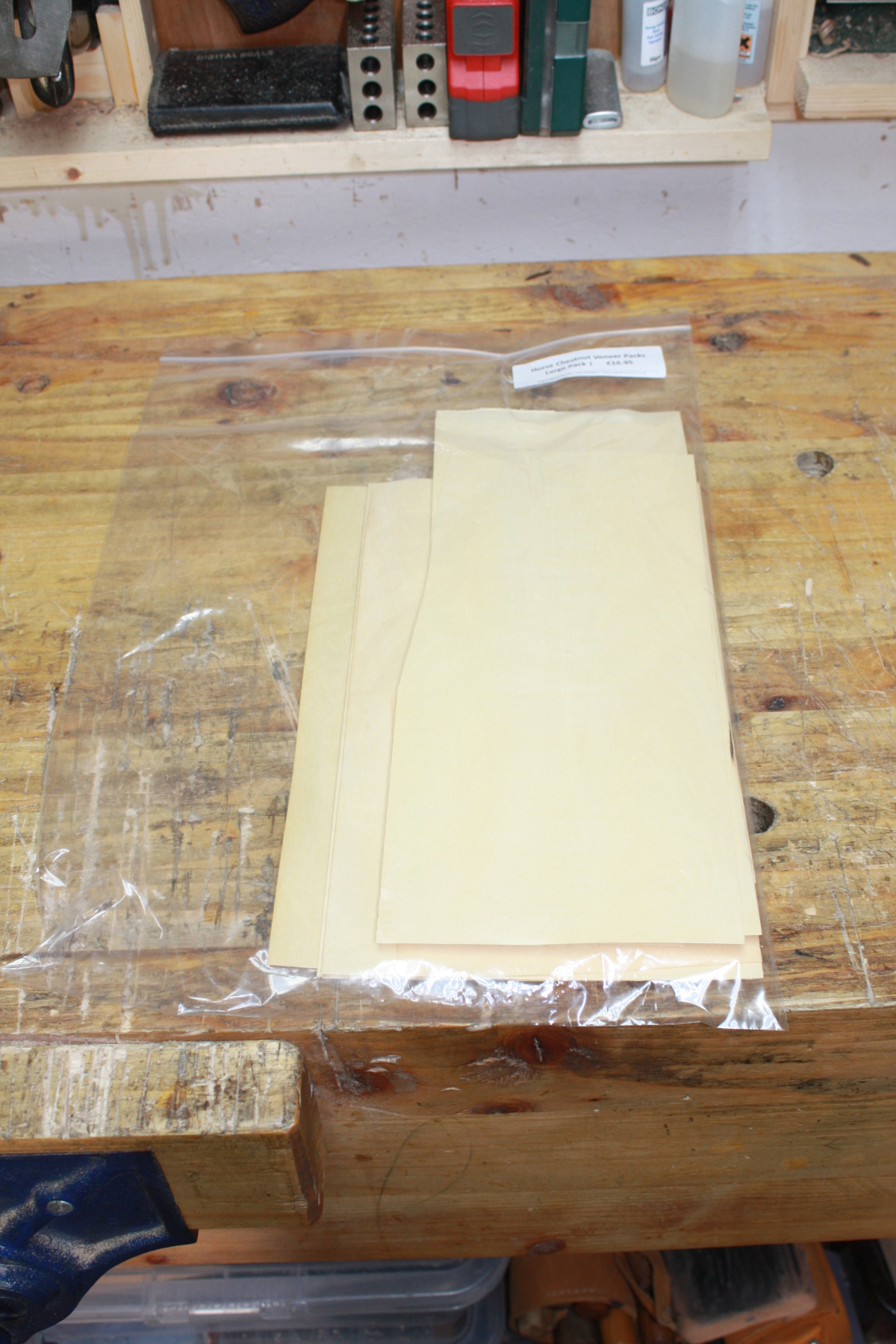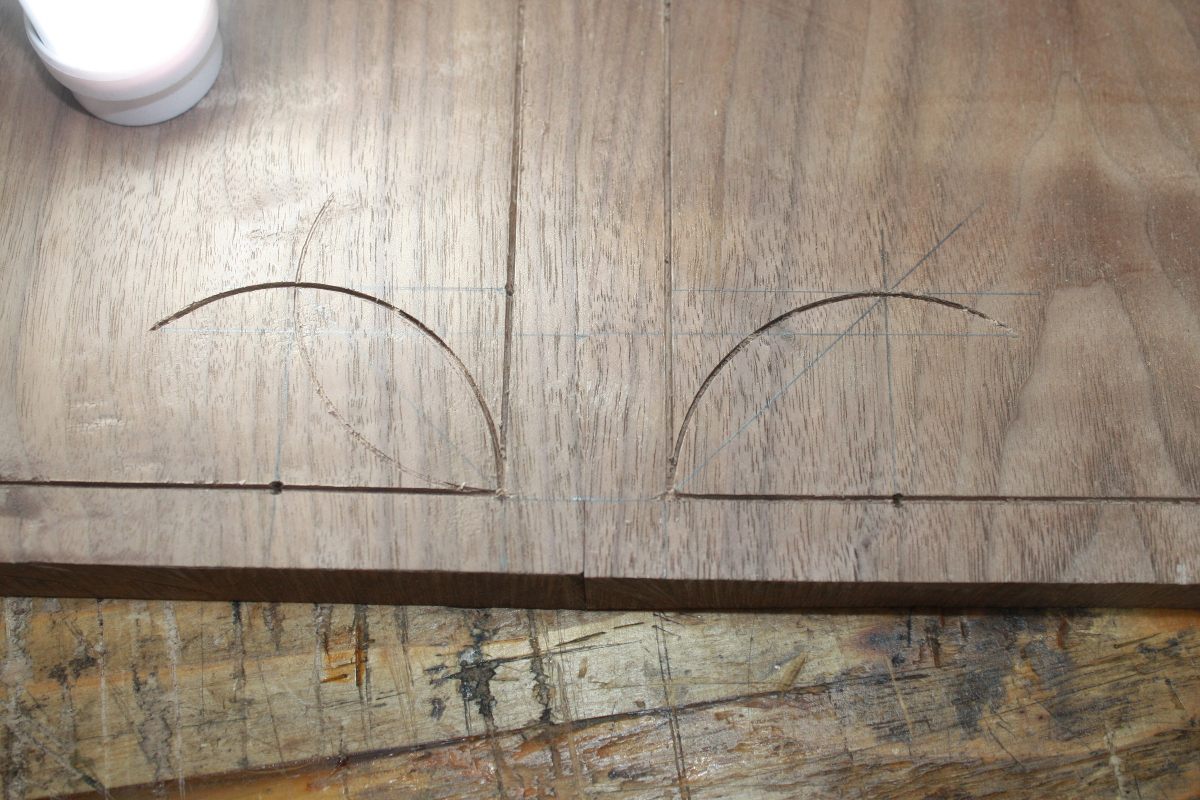Another small update. I tried cutting my own veneer... and just couldn't get it to work at all I'm afraid.
I mean, maybe if I needed to put in a wavering line or something...
So I tried laminating two 0.6mm sheets together, pressing them between sheets of MDF while the glue dried. Didn't work too badly:
(It's the line on the right).
I'm still emailing suppliers trying to find somewhere that does constructional veneer in quantities that aren't ridiculous compared to how much I'd use, but so far I'm not actually getting any responses. I did buy some horse chestnut veneer from originalmarquetry.co.uk but it turned out to be 0.6mm too

Right size of pack though:
I'll keep looking but in the meantime the laminated sheets seemed good enough to give a try with, so...
(sorry about the card, it was the only plastic card I could find to use as the surface for the pivot point of the radius cutter)
That cutter's brilliant btw, no tendency to follow the grain away from the straight edge at all. It will take off your finger if you hang it over the edge of the ruler though...
The endpoints of the stringing are a bit cack-handed, but for a first attempt I'm not too upset about that. I do need to get a bending iron of some kind (I don't want to drag my hot air gun from the electronics bench out to the shed but I suppose if I have to...). I could manage those curves with just friction heat while rubbing the stringing into shape between my fingers but the remaining curves are a bit too aggressive for that. And it's not finished yet by a long shot, there are a few more bits on those sides alone, and then there are seven or eight more surfaces on that project that might get some decoration (which should tell you how bad the joinery is

).






















































